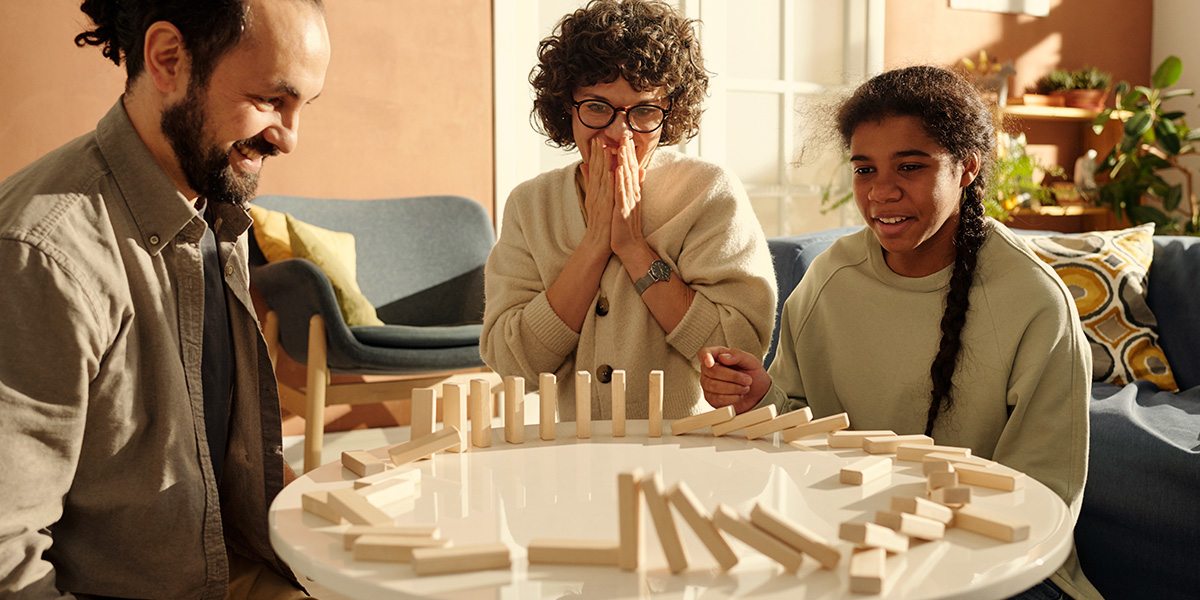Feeling like you need to take time off work to improve your mental health? A sabbatical might help. Here’s what to consider before asking for one.
5 parenting tips for blended families
It can be tricky to establish new bonds and connect with step-kids. But it’s not impossible. Here’s how you can make it happen.

Falling in love when you've already had kids means bringing two families together. Figuring out life as a blended family can be an exciting – and at times challenging – new adventure. And it’s not uncommon. Statistics Canada says 11.8% of couples with children living in the household are step-families. And 40% of those step-families are blended, meaning they have children from one or both prior relationships as well as at least one biological or adoptive child of the couple.
It's natural that bringing two families together will take some work. One of the trickiest aspects can be creating a strong stepparent-stepchild relationship.
Are you hoping to create healthy or healthier bonds between parents and kids? Here are 5 things you can do to make it all a little bit easier.
1. Set family rules that both parents agree to
Two different families coming together brings different ways of parenting. That means there will be some give-and-take when trying to create a happy and healthy family relationship.
“Coming to an agreement with your partner is critical to keep the peace,” says psychologist Sara Dimerman.
Dimerman recommends alerting children to any changes via an open family discussion. It’s best if these discussions happen before setting new rules, like limits on screen time.
In cases with set family rules, change may not be possible. You may decide to have each parent/child pair continue with their old rules even if they're different.
For example: one parent’s child gets a weekly allowance. The other parent asks their kids to do chores in exchange for money. Both parents can choose to continue with their parenting styles.
2. Keep some special ‘parent-kid’ time separate from the blended family
At first, it's common for kids to be resistant to becoming one big, happy blended family. For instance, a child may still hope their separated or divorced parents will get back together. Or they may feel that the new partner is taking their parent's attention away from them.
That's why Dimerman recommends spending time alone with your biological children. This way you continue to give your child important one-on-one time.
At the same time, your new partner can begin forging their own bonds too. These new relationships may take time to grow. And they may depend on how old the children are. Teens may resist and even resent being "parented" by the new partner. Younger children, on the other hand, may welcome time alone with that person.
The key is not to try too hard. “Sometimes stepparents work overtime trying to win the child's affection,” Dimerman says. “But children typically prefer that the relationship grow organically.”
“If they feel pressured or bought, then they may back off or push away,” she adds. Sometimes, the best relationship between a stepchild and stepparent is different. It's more like that of an aunt, uncle or close family friend.
3. Set up family events you can all enjoy together
While one-on-one time is important, so is finding things you can all do together. Consider starting a new tradition to strengthen your new family. What that looks like will depend on your kids ages and their personal tastes, Dimerman points out. This could mean choosing a new series to watch together or making personal pizzas every Sunday.
4. Host family meetings to keep talking
“As with all communication, validation and acknowledgement are key,” says Dimerman. She adds that family meetings can be a useful tool. The key is to make children and adults feel comfortable bringing up concerns and finding solutions.
“Parents and stepparents don’t need to agree with what a child is feeling. But they can validate their emotions. That will encourage the child to keep sharing,” she says.
Do you have family insurance?
Life insurance and critical illness insurance can go a long way to help protect your blended family and your finances.
A Sun Life advisor can help you decide what’s best.
5. Consider therapy – for parents and children
Along with family meetings, a blended family may benefit from talking about their feelings with a third party. Think about finding a family therapist that you and your child connect to. Keep in mind it doesn’t have to be the same therapist.
Do you have workplace benefits? Your benefits coverage or Employee Assistance Program (EAP) may provide virtual therapy. Your workplace benefits can be a great place to start to find mental health solutions and support. If your benefits are with Sun Life, sign into my Sun Life to see what they have to offer.
This article is meant to provide general information only. It’s not professional medical advice, or a substitute for that advice.


